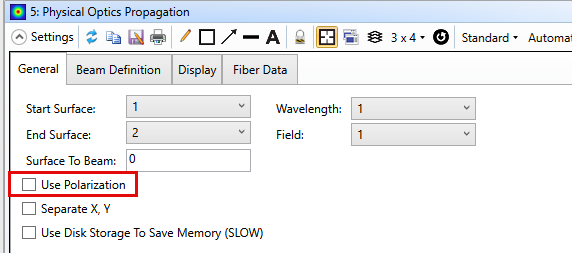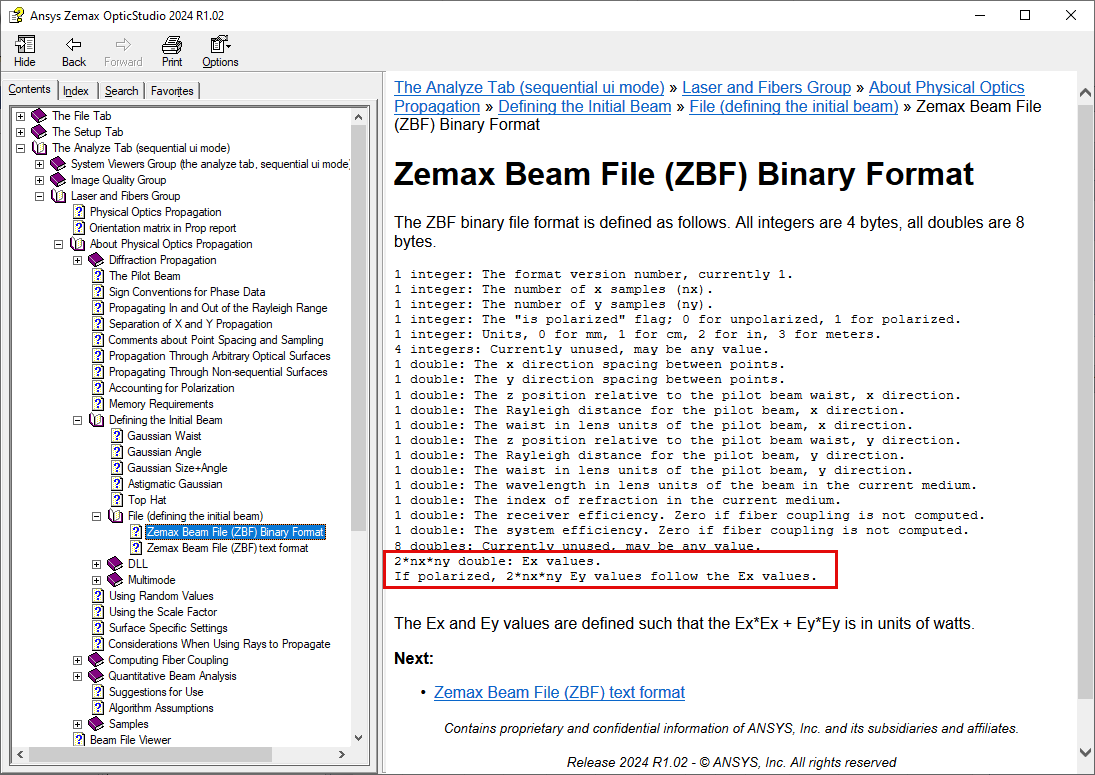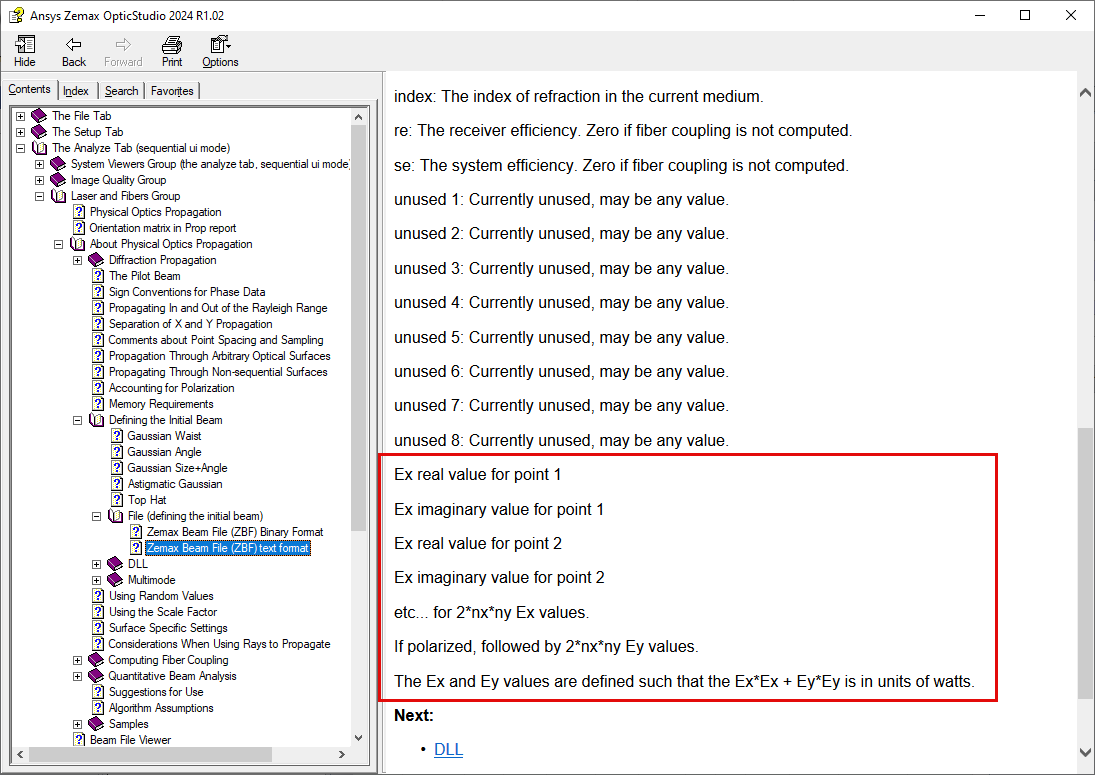I am going through the article on POP analysis, and came across this :
“Under the Display tab, check Save Output Beam To: and Save Beam At All Surfaces. These options create a Zemax Beam (.zbf) File at every surface that contains the electric field information.”
Here is the aricle : https://support.zemax.com/hc/en-us/articles/1500005488601-Using-Physical-Optics-Propagation-POP-Part-1-Inspecting-the-beams
The ZBF file output seems to give only irradiance in watts/mm^2. There is an option called Ex and Ey irradiance, not sure what this means, but it seems like irradiance output in either x or y coordinate.
I understand that it is the electric field (complex) that is being propogated in free space with POP algorithm, but the output is always irradiance, right?
Is it possible to retrieve the electric field data by sq root of irradiance ? I am trying to get some clarity on whether the ZBF text file has irradiance or electric field data ?
Any help would be very much appreciated.
Regards,
NC






